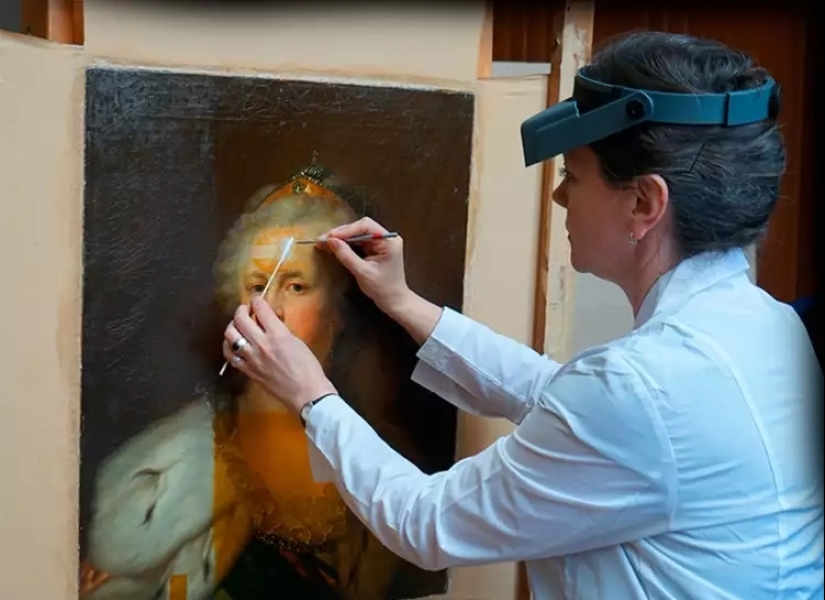Why Flash Photography Is Banned in Museums
Categories: Culture | Exhibition | Science
By Pictolic https://pictolic.com/article/why-flash-photography-is-banned-in-museums.htmlIn museums, galleries and exhibitions you can often see people taking pictures of exhibits. Sometimes shooting is allowed freely, but in some cases you have to pay extra for photos or videos. But almost always there are signs prohibiting the use of flash. Let's figure out why such a ban was introduced.

It is easy to guess that flashes are prohibited because of their impact on exhibits. But this is not the only reason. Such a restriction on shooting is also related to the atmosphere of the museum and something else. Therefore, flashes are prohibited even where objects are exhibited that cannot be damaged by a light pulse. But let's start from the very beginning.
Experts in chemistry and physics confirm that bright light can damage ancient paintings, photographs, sculptures and archaeological artefacts. The flash causes reactions in some materials that can change their pigmentation and even structure.

For example, the pigments of the paints used to paint the paintings may change color. The effect cannot be noticed with a single flash. But constant powerful pulses of light will eventually cause the paints to fade or change their shade. This leads to a gradual loss of artistic value by the work of art. To restore it, expensive and time-consuming restoration is needed, which is not always successful.
In many museums where flash photography is prohibited, exhibits are additionally protected by glass screens. This measure is justified, because many visitors do not read the warnings or simply forget to turn off the flash. Unfortunately, not all objects can be protected in this way. Large sculptures, panels, murals and many other large-scale works cannot be hidden behind glass.

Xenon lamps, used in most modern flash units, emit light that can not only change color. It has a negative effect on the very structure of materials: wood, canvas, marble, plaster, plastic and even some metals. That is why such lamps are used in laboratories to assess the durability of materials and their reaction to light.
But it’s not just about the threat to art and antiquities. Many people don’t go to museums just to be able to brag about it on social media. Most people come to enjoy art, to immerse themselves in the atmosphere of masterpieces, to give free rein to their thoughts and dreams.

Of course, a powerful flash of light nearby is not what is needed in such cases. It affects people as sharply as a loud sound, destroying the atmosphere and charm of the moment. Someone will take it calmly and again plunge into their thoughts, but for someone, a visit to the beautiful will be hopelessly spoiled.
But what if you really want to take a photo or you really need it for something, like an article or review? There is only one way out - use modern, highly sensitive equipment. Many cameras can take great pictures without additional lighting. With the right camera settings, you can achieve good quality even using budget equipment.
It is worth saying that science has not proven that shooting with a smartphone with a flash can harm exhibits. Diode flashes of mobile devices do not have the power of xenon flashes, which are used in photographic equipment. However, you cannot use a flash even on a phone.

The whole point is that it is not profitable for the museum administration or the gallery owner for visitors to take quality photos. Therefore, the lights in the halls are dimmed not only to create an atmosphere. In poor lighting, it is extremely difficult to take a good picture without a flash. And this means that the guest will go to the museum hall and buy a postcard or a whole set as a souvenir.
There is a category of experts who are sure that the ban on flashes is a trick with a commercial subtext, nothing more. They even conducted serious studies to expose their opponents. No one will deny that ultraviolet makes paints dull. But how many times should a flash work to be comparable to sunlight? In laboratory conditions, it was possible to find out.

After several experiments using sophisticated equipment, scientists found that 7.2 million photographs would need to be taken in one hour for the intensity of sunlight and artificial light to match. But this hour is not enough for the colors to begin to fade. This requires long hours or even days. But the researchers' claims have failed to change the situation, and flashes are still banned in museums.
Recent articles

While the sun practically disappeared from the sky above the Arctic Circle and the night seemed endless, the Vikings prepared to ...

This is for us, people, the New Year is one of the most important holidays of the year. But for animals, it's all a fuss, running ...

If it seems to you that the New Year holidays are being celebrated somehow incorrectly, then you definitely haven't seen these ...